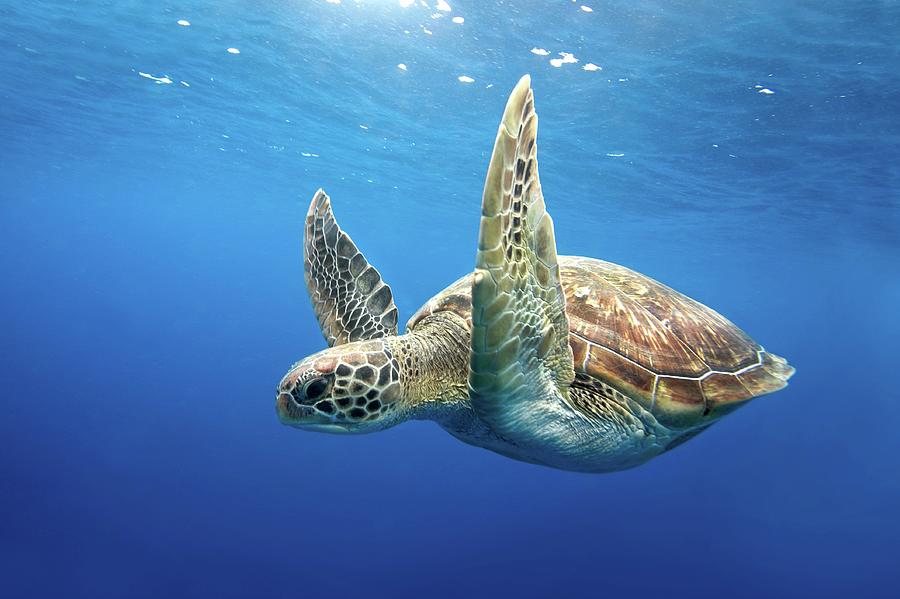

Adults of this species commonly reach 100 cm in carapace length and 150 kg in mass.

The green sea turtle is the largest hard-shelled sea turtle. In 1992, the estimate of mature female green turtles associated with the French Frigate Shoals was set at roughly 750. Current Hawaiian green turtle population levels are still thought to be below pre-western contact, and probably pre-World War II levels as well. Unfortunately, the Hawaian green still faces severe threats, most notably fibropapilloma tumors and degradation of foraging habitat. Endangered Species Act, has created an environment in which the Hawaiian green turtle should prosper. This, combined with its threatened status under the U.S. Fortunately, over 90% of nesting activity for the Hawaiian green turtle population occurs at the French Frigate Shoals, inside a National Wildlife Refuge System administered by the U.S. In other parts of the world, green turtles face a serious threat from the destruction and loss of nesting sites. In 1974, the State of Hawaii finally passed a regulation providing some protection, but this was virtually ignored until 1978, when the Hawaiian green turtle was placed on the list of threatened species. Large numbers of green turtles were harvested throughout the Hawaiian Islands through the nineteenth and early twentieth centuries. With the arrival of western culture, however, the level of exploitation of this resource increased dramatically. Green turtles were a source of food, tools, and ornamentation for early Hawaiians. In 1978, the Hawaiian population of the green turtle was listed as threatened under the U.S.

The green turtle is listed as endangered by the International Union for the Conservation of Nature. Department of Commerce, National Oceaonographic and Atmosphere Administration, National Marine Fisheries Service, NOAA-TM-NMFS-SWFC-7, 1980. Some biological information has been extracted from Synopsis of Biological Data on the Green Turtle in the Hawaiian Islands, G. The following is based on information from the Interim Recovery Plan for Hawaiian Sea Turtles, National Marine Fisheries Service, 1992. The Hawaiian Green Turtle (Chelonia mydas)Īikane, the quintessential Hawaiian green turtle, settling into her favourite resting spot at the Turtle House, Honokowai.


 0 kommentar(er)
0 kommentar(er)
